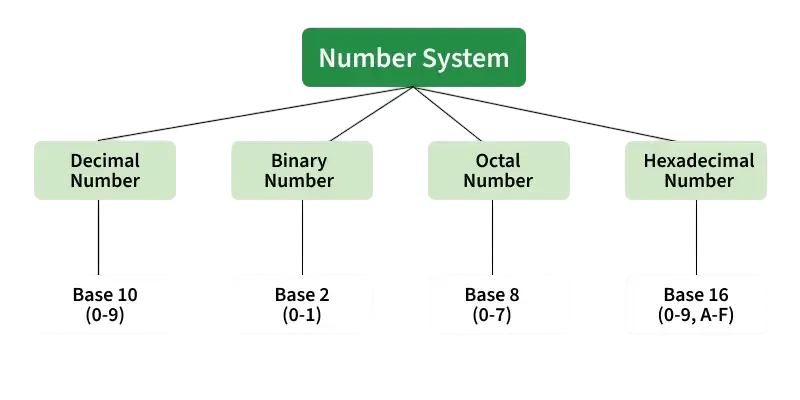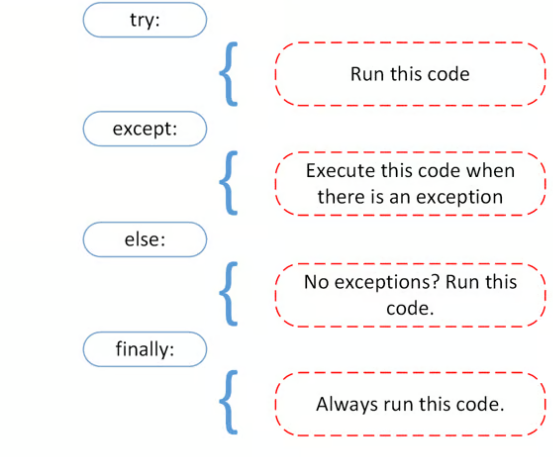
- Binary Number System Basics
- Manual Conversion Logic
- Using int() with Base Argument
- Custom Function for Conversion
- Handling Binary Input as Strings
- Error Handling
- Conversion of Lists of Binaries
- Real-World Applications
- Conclusion
Binary Number System Basics
The binary number system, a base-2 numeral system, forms the foundation of modern computing. It consists of only two digits: 0 and 1. Unlike the Decimal in Python system, which uses base 10 and digits from 0 to 9, the binary system uses each digit (bit) to represent an increasing power of 2, starting from the rightmost digit. For example, the binary number 1101 represents 1×23+1×22+0×21+1×20=131×2^3 + 1×2^2 + 0×2^1 + 1×2^0 = 13. This simplicity allows computers to represent all types of data including numbers, text, images, and even video in binary form. Understanding binary is key to developing software and interpreting machine-level data.The binary number system is a base-2 numeral system that uses only two digits: 0 and 1. Each digit in a binary number is called a bit (binary digit). Unlike the decimal system (base-10), Python Training which is based on powers of 10, the binary system is based on powers of 2. The rightmost bit represents 202^020, the next one 212^121, and so on. Binary is fundamental to computing because digital systems use two voltage levels—off (0) and on (1)—to represent and process data. Computers internally operate using binary to perform c, logic, and data storage.
Interested in Obtaining Your Python Certificate? View The Python Developer Course Offered By ACTE Right Now!
Manual Conversion Logic
To Manual Conversion Logic a binary number to its decimal equivalent, begin from the rightmost c, assign each bit a Throw and Throws Java power of 2, and multiply accordingly. Sum all the results to get the decimal number. For example, the binary number 10110 is:
= 1×2^4 + 0×2^3 + 1×2^2 + 1×2^1 + 0×2^0
= 16 + 0 + 4 + 2 + 0 = 22

This process helps build a deeper understanding of how binary data operates in memory and systems.
Using int() with Base Argument
Python simplifies this task through its built-in int() function. Python Training You can convert a binary string directly to a decimal integer by specifying the base:
- binary_str = “10110”
- decimal_number = int(binary_str, 2)
- print(decimal_number) # Output: 22
This method is preferred for its brevity and reliability, especially when working with user input or large datasets.
Custom Function for Conversion
Writing your own function to perform the conversion helps reinforce learning. Call a Function in Python Here’s a custom Python function that mimics manual conversion:
- def binary_to_decimal(binary):
- decimal = 0
- for index, bit in enumerate(reversed(binary)):
- decimal += int(bit) * (2 ** index)
- return decimal
- print(binary_to_decimal(“10110”)) # Output: 22
This function iterates over each bit in the binary string, starting from the right, calculates its value using the power of 2, and adds the result to the total.
Gain Your Master’s Certification in Python Developer by Enrolling in Our Python Master Program Training Course Now!
Handling Binary Input as Strings
Binary inputs are best handled as strings, especially when preserving leading zeros (e.g., 000101). Leading zeros can be important in network protocols, barcodes, and cryptography. In Python, binary numbers are often received as strings, especially from user input or external sources. This allows validation and easy manipulation before conversion. To convert a binary string to decimal, use int(binary_string, 2) Remove Duplicate Elements . String inputs can be checked for validity using conditions like set(s).issubset({‘0’, ‘1’}). Handling binary as strings helps avoid type errors and enables flexible input processing.To ensure the input is valid, check that it only contains 0 and 1 characters:
- def is_valid_binary(binary_str):
- return all(bit in ’01’ for bit in binary_str)
Using such validation before conversion prevents errors and ensures data integrity.
Error Handling
A robust program must handle invalid inputs gracefully. When converting binary to decimal in Python, invalid input (e.g., non-binary characters) can cause a ValueError. To prevent this, use try-except blocks to catch and manage exceptions. You can also validate input manually using string checks before conversion Best Software Development Courses . Graceful error handling improves user experience and avoids program crashes. Always provide informative error messages to guide the user.Python’s try-except blocks can be used to catch conversion errors:

- try:
- binary_input = input(“Enter a binary number: “)
- if not is_valid_binary(binary_input):
- raise ValueError(“Invalid binary input”)
- print(“Decimal equivalent:”, int(binary_input, 2))
- except ValueError as ve:
- print(“Error:”, ve)
This protects your program from crashing and provides user-friendly error messages.
Are You Preparing for Python Jobs? Check Out ACTE’s Python Interview Questions and Answers to Boost Your Preparation!
Conversion of Lists of Binaries
When processing datasets, you may need to convert multiple binary strings. Use Python’s list comprehension or map() function:
- binary_list = [“101”, “1110”, “1001”]
- decimal_list = [int(b, 2) for b in binary_list]
- print(decimal_list) # Output: [5, 14, 9]
This approach is scalable and well-suited for bulk conversions in applications such as sensor data analysis or digital signal processing.
Real-World Applications
- Embedded systems: where binary sensor values must be translated into readable data.
- Networking: IP addresses in binary need decoding for diagnostics.
- Data storage systems: File formats and encodings often use binary representation Become an IT Engineer.
- Digital electronics: Circuit states are interpreted through binary signals.
- Cryptography: Binary keys and hash values are often presented in hexadecimal or decimal formats for interpretation.
Understanding these practical implications enriches the learning process and highlights the relevance of binary-decimal conversions in professional roles.
Handling Unicode Strings
Sorting Unicode strings works the same as sorting regular ASCII strings Complete Guide on System Software, but it’s important to normalize the text to avoid inconsistencies. For example:
- import unicode data
- s1 = “café”
- s2 = “café”
- print(s1 == s2)
- s1_nfc = unicodedata.normalize(‘NFC’, s1)
- s2_nfc = unicodedata.normalize(‘NFC’, s2)
- print(s1_nfc == s2_nfc)
Unicode normalization ensures that visually identical strings are treated as equal, which is crucial when sorting international text.
Conclusion
Converting binary to decimal in Python is an essential programming skill that bridges low-level binary data and high-level numerical logic. You can convert manually by summing powers of two or use Python’s built-in int() function for simplicity. Writing custom functions, validating inputs, and applying error handling ensure program robustness. Applications range from embedded systems and digital electronics to networking and cryptography. Comparing binary and decimal systems deepens understanding, while advanced topics like two’s complement, Python Training bitwise operations, and floating-point representation broaden your skill set. Mastering binary-to-decimal conversions lays the groundwork for deeper exploration into data encoding, algorithm development, and systems design.





